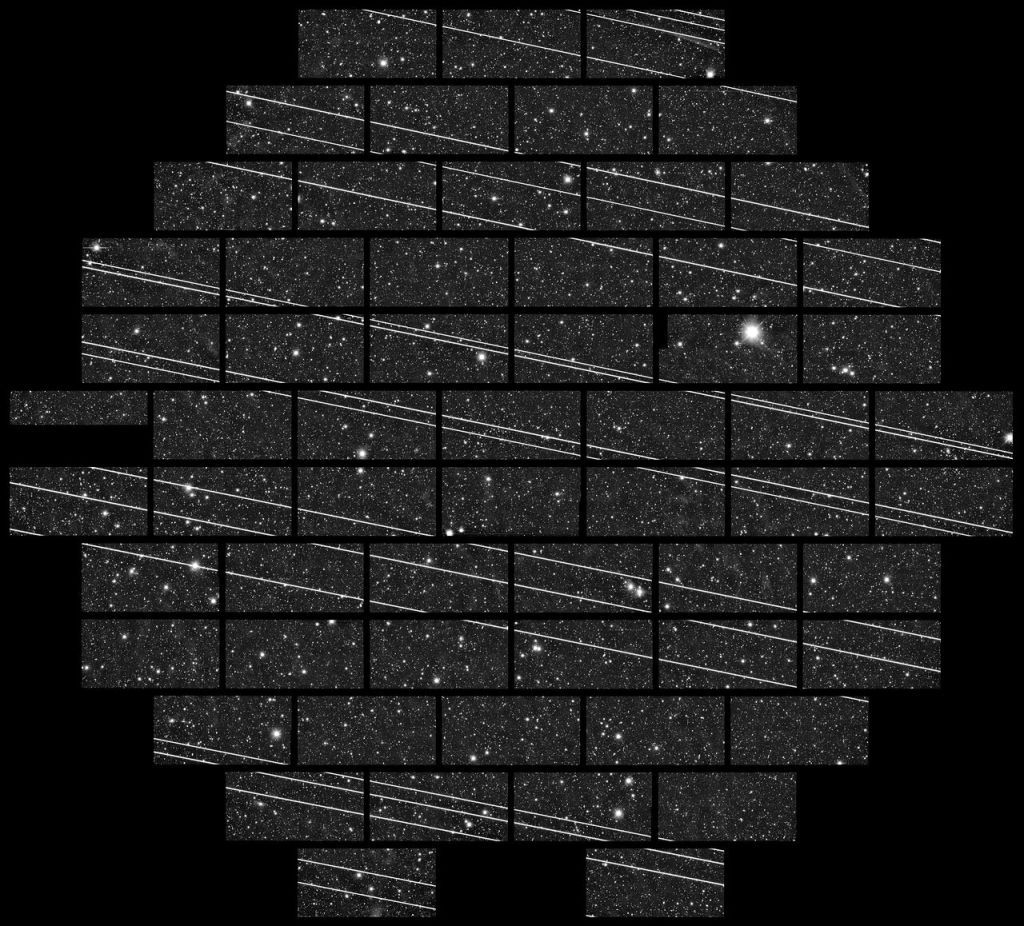Satellite Constellations 1 Workshop
The National Science Foundation’s NOIRLab and the AAS, with support from NSF, hosted the Satellite Constellations 1 (SATCON1) workshop virtually from 29 June to 2 July 2020. The first two days were open to people interested in mitigating the impact of satellite constellations on astronomy.
This workshop gathered together astronomers, satellite operators, dark-sky advocates, policy-makers, and other stakeholders and interested parties to discuss, understand, and quantify the impacts of large satellite constellations on astronomy and the human experience of the night sky. The goal was to work collectively towards effective solutions to mitigate those impacts and to publish them in a report which will be widely distributed. As launches and deployments of these satellite constellations have already begun, and new launches are planned for every few weeks, time is of the essence.
As the central goal of the workshop process, we have written a report with recommendations that include quantitative metrics:
In the weeks before the workshop, four working groups were drafting a report summarizing the current state of knowledge in four areas (1) synthesizing results from ground-based observations of satellites and identify future observing program needs; (2) examining the current status of simulations for assessment of impact and need for further refinement; (3) exploring mitigation through lab measurement of satellite surface reflection and detector performance as well as operational strategies; and (4) developing a set of metrics for protection of Optical/IR observations based on the results of the other working groups. Their findings were shared with registered attendees and other stakeholders in a document a couple of weeks before the workshop and were presented and discussed during the first two days of the workshop. Through the outcome of the discussions, revisions will be made and a report will result with recommendations that include quantitative metrics and an understanding on the impact on the science as well as our cultural heritage. This report will then be widely disseminated.
Where was the conference? Online via ZOOM.
Schedule: We met for four hours each day, in two 2-hour blocks: 10:30 am - 12:30 pm ET and 1:00 pm - 3:00 pm ET. The first two days were devoted to sharing results from the four working groups. Days 3 and 4 focused on merging information from the four working groups into a single report.
The Scientific Organizing Committee:
- Jeff Hall (Lowell Observatory, LPRISD Chair), Co-Chair
- Constance Walker (NOIRLab & IAU), Co-Chair
- Lori Allen (NOIRLab)
- Amanda Bauer (Rubin Observatory / NOIRLab)
- Richard Green (Steward Observatory)
- Kelsie Krafton (AAS)
- James Lowenthal (Smith College, LPRISD)
- Joel Parriott (AAS)
- Phil Puxley (AURA)
- Patrick Seitzer (U. Michigan, LPRISD, modeling expert)
- Tony Tyson (UC Davis, Rubin Obs.)
Archived Presentations from the Workshop
Observations Working Group
- Lori Allen (NOIRLab), Summary of Observations Working Group
- Jeremy Tregloan-Reed (Universidad de Antofagasta), Optical to NIR magnitude measurements of the Starlink LEO satellites & effectiveness of the Darksat darkening treatment
- Harry Krantz (Steward Observatory), Autonomous Observations of Starlink Satellites with the Pomenis Observatory
- Meredith Rawls (University of Washington/Rubin Observatory), Comparing SpaceX's DarkSat to brighter Starlink siblings in g-band with DECam
Simulations Working Group
- Pat Seitzer (University of Michigan), Summary of Simulations Working Group
- Jonathan McDowell (Center for Astrophysics), A Sky Full of Satellites: Simulating the Visibility of MegaConstellations
- Cees Bassa (ASTRON) / David Galadi (SEA ) / Olivier Hainaut (ESO), Simulations of the Number of Satellite Trails and the Impact on Visible/Near IR Observations
- Moriba Jah / Daniel Kucharski (University of Texas), Simulating the Brightness of Satellites with BRDFs
- Pat Seitzer (University of Michigan), Summary and Recommendations for Future Work
Mitigations Working Group
- Tony Tyson (UC Davis, Rubin Obs.), Summary of Mitigations work
- Andrew Bradshaw (SLAC), LSSTCAM Sensor Impacts and Correction
- Mike Sholl (SpaceX), Starlink Optical Signature Characterization
- Federica Bianco (U. Del., LSST Science Collaborations), Impact on Rubin Observatory Science Collaborations Programs
- Clare Saunders (Princeton, Rubin Obs.), Mitigation of Satellite Tracks in LSST Data Processing
Metrics Working Group
- Richard Green (Steward Observatory, UArizona), Metrics for Reflected Sunlight and Position Accuracy
- James Lowenthal (Smith), Metrics for Impact on Diverse Astronomical Programs and Recommended Simulation Studies
- John Barentine (IDA), Impact on Amateurs and the Non-Scientific Community
- Jared Greene (SpaceX), Impact mitigation through operator collaboration


